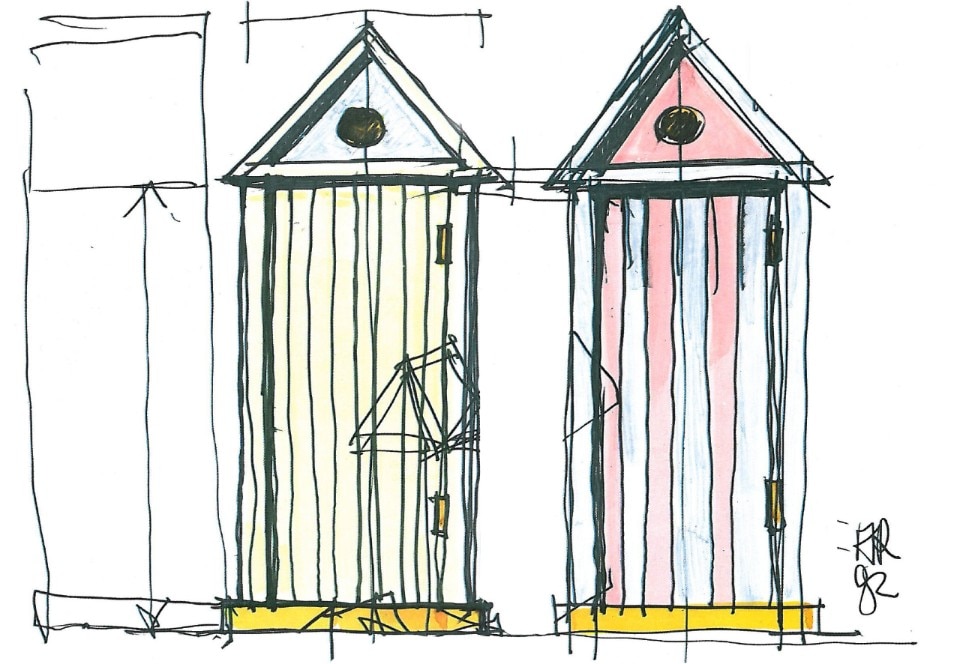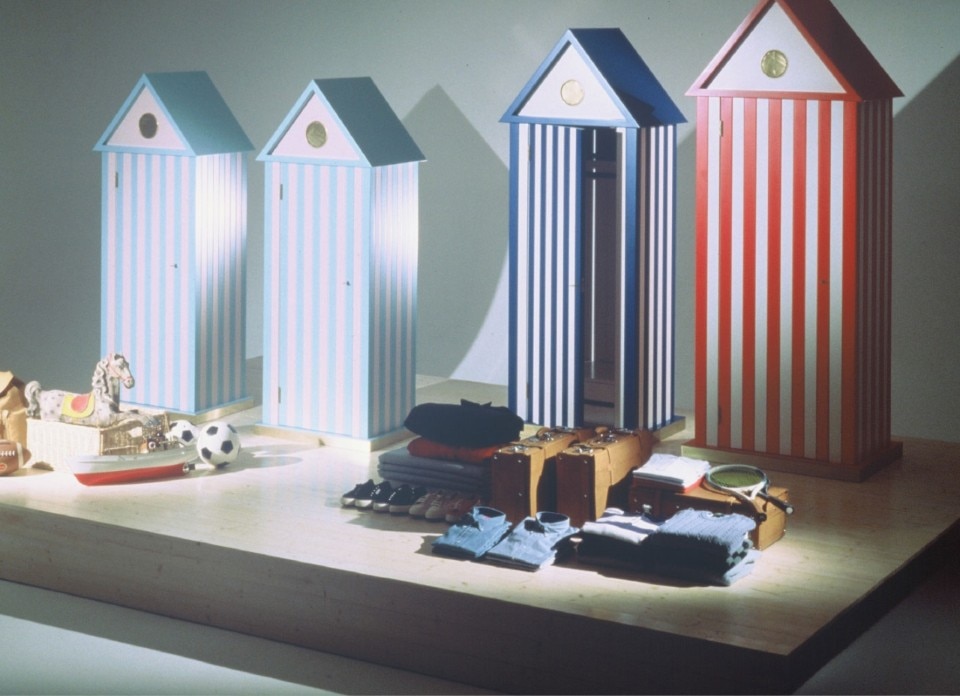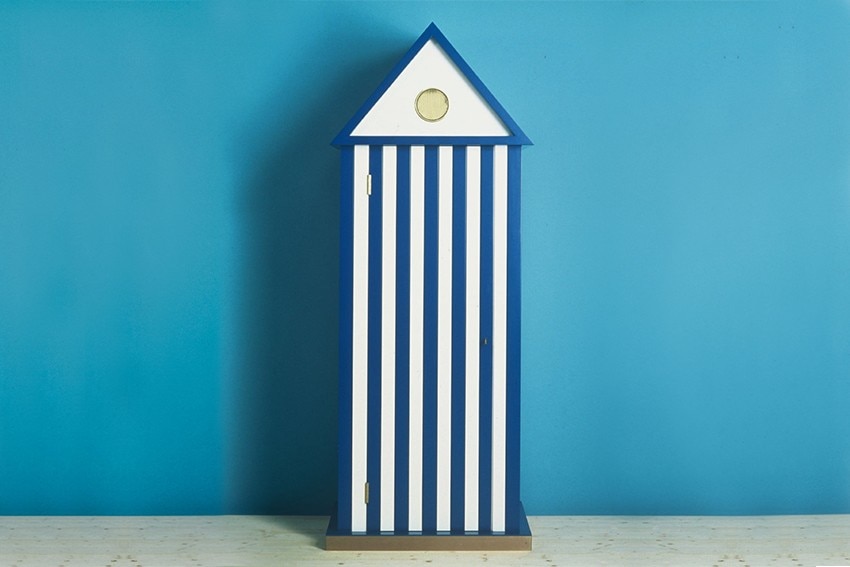Exactly 40 years have passed since, in 1982, the Bruno Longoni furniture atelier in Cantù started producing the Cabina dell’Elba wardrobe that Aldo Rossi had designed a couple of years earlier, creating with Molteni 4 the prototypes presented at the 1980 Salone del Mobile.
The Cabina was and remains an exemplary result of Aldo Rossi’s design approach and his desire to transfer architectural typologies inside the home. Fully consistent with his idea of an interior space built in harmony with the outside space, of a design created in the language of architecture and the city, Rossi took the typology of cabins he observed since he was a child on the beaches of the island of Elba and transformed them into a domestic wardrobe, preserving all their typical features (the tympanum, the decoration with white and blue or red vertical stripes, the simple parallelepiped shape).
In this case, as he would later do with the coffee pots, La conica (1984) and La cupola (1990), Rossi worked by means of analogical associations on primary and pure geometric forms, pursuing his dream of a domestic landscape built and designed as similar to urban space, and using creative processes based on bold changes of scale and intermittent memory.

“They seemed to be the minimum size for living, an impression of summer”: this is how Rossi describes the Cabine dell’Elba in his Scientific Autobiography. Small houses. Architectural archetypes. Simple constructions but capable of synthesising the meaning of architecture. “The cabins – Rossi writes – only have four rigid walls and a tympanum; there is something in the tympanum that is not merely functional, in the same way it implies a flag and it implies colour. The striped colour is an essential, recognisable part, perhaps the most overtly architectural component”.
They seemed to be the minimum size for living, an impression of summer.
There is something “theatrical” about it. An idea of a house that becomes theatre, that takes its sets from the outside world and introjects into the living space the shapes that design the landscape of life. Because the shapes Rossi identified in the cabins of Elba can be found in many other similar constructions, in thousands of cabins on the beaches of the Mediterranean, but also in California or Argentina.

These cabins seemed to him to have a particular and universal nature. Rossi observed them until he seized their image and – through the image – the object itself. Then he redesigned them and placed them in houses. In doing so, he made the temporary nature of the cabin, linked to the bathing season, stable and long lasting. Childhood memories and scents of lost time come to mind in this design that takes up an archetype that Rossi found all over the world. The Cabin is his Recherche. But also his way of introjecting the world and time into the domestic space of the intérieur.
Opening image: Aldo Rossi, wardrobe Cabina dell’Elba, produzione Bruno Longoni Atelier d’Arredamento, 1980-82. Courtesy Bruno Longoni Atelier d’arredamento


